Kaunas is a city with a rich history, impressive nature, and many architectural and cultural monuments. Occupying a strategically important position, he has seen a lot in his lifetime, was repeatedly destroyed. But, nevertheless, many of its ancient buildings have survived to this day. The architecture here is represented by different styles. In Kaunas Castle and the house of Perkūnas, Gothic is noticeable, in the buildings of the Town Hall and the Pažaislis Monastery - Baroque, in the Church of Michael the Archangel there is a neo-Byzantine style, neoclassicism is characteristic of Soviet buildings.
The city is considered the cultural capital of Lithuania. There are 4 theaters, about 40 museums and galleries. Festivals, musical, theatrical, sports events are regularly held. Kaunas is also the birthplace of the Zalgiris basketball club, one of the strongest in Europe.
What to see and where to go in Kaunas?
The most interesting and beautiful places for walking. Photos and a short description.
- Kaunas castle
- Alley Laisves
- IX fort
- Town hall
- Cathedral of Saints Peter and Paul
- Church of St. Francis Xavier
- Church of St. Michael the Archangel
- Church of Vytautas
- Church of St. Gertrude
- Church of the Resurrection of Christ
- Pazhaislis Monastery
- Kaunas State Drama Theater
- Kaunas State Musical Theater
- Čiurlionis Museum
- Devils Museum
- Military Museum named after Vytautas the Great
- M. Žilinskas Art Gallery
- Museum of the History of Lithuanian Medicine and Pharmacy
- Museum of Folk Life of Lithuania
- Lithuanian Aviation Museum
- Sugihara House Museum
- House of Perkūnas
- Historic presidential palace
- Zalgiris Arena
- Kaunas Botanical Garden
- Ažuolinas park
- Lithuanian zoo
- Kaunas funiculars
- Observation deck on Mount Aleksotas
- Juniper valley
Kaunas castle
An ancient defensive fortress, the only such building in Lithuania. It was erected in the XIII century to repel the attacks of the Teutonic Knights and was of great strategic importance. Built at the confluence of two rivers. It was destroyed and rebuilt several times. Only a third of the castle with 2 towers has survived to this day. A museum on the history of the city and the fortress is organized here, as well as exhibitions of painting and sculpture. Nearby is Santakos Park.

Address: Kaunas castle, Kaunas, Lithuania
Phone: +370 37 220 555
Opening hours: 10:00 - 18:00
Alley Laisves
This is the most popular pedestrian street in Kaunas. Translated from Lithuanian - Liberty Alley. Founded in the 19th century. Length - 1.7 km, width - 24-27 meters. There are no vehicles and smoking is prohibited. Rows of trees are planted along the alley, flower beds are laid out, and there are many benches for relaxing. There is a wide range of shops, restaurants, theaters, hotels, museums, nightclubs. There are many monuments and ancient buildings of historical value.

Address: Alley Laisves, Kaunas, Lithuania
Opening hours: 10:00 - 22:00
IX fort
The Kovno defensive fortress around the city was built at the end of the 19th century and consisted of 8 forts. The last, ninth, was built on the eve of the First World War. In Soviet times, it was used as a prison. And during the period of fascist occupation, the fort turned into a concentration camp, where Jews and Poles were massacred. Today, a museum of genocide and massacres has been created here, as well as a large memorial in memory of the many thousands of victims of the Nazis.
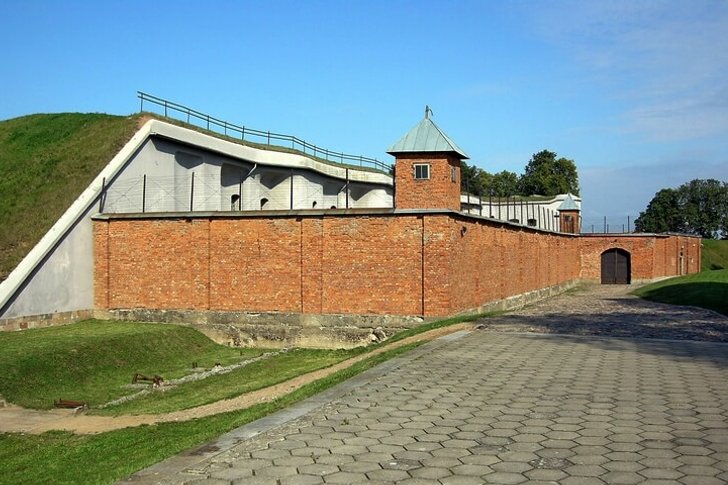
Address: IX fort, Kaunas, Lithuania
Opening hours: 09:00 - 18:00
town hall
It rises in the heart of the historical part of the city - on the Town Hall Square. It was erected in the 16th century, often rebuilt, therefore it combines elements of different styles. The town hall housed a prison, warehouses, an Orthodox church, the royal residence, a fire station, a theater, a city archive, and an institute. The last reconstruction was carried out in 2005. Today, a city museum dedicated to the history of Kaunas has been opened here, and an observation deck has been equipped.
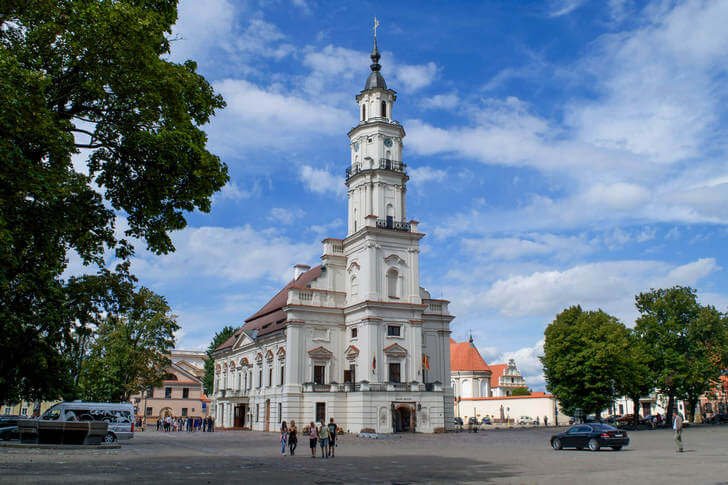
Address: Town hall, Kaunas, Lithuania
Phone: +370 37 201 680
Opening hours: Monday - Friday: 8:00 - 17:00
Cathedral of Saints Peter and Paul
Architectural monument. One of the largest Catholic churches in Lithuania. It began to be built in the 15th century in the Gothic style. 2 centuries later, a building appeared in the form of a rectangular basilica, after another 100 years, a 55-meter bell tower was completed, and in the 19th century, a chapel. The baroque interior has been preserved since the 18th century. 9 altars have great artistic value. The temple is known for the ancient image of the Suffering Mother of God, who gives healing.
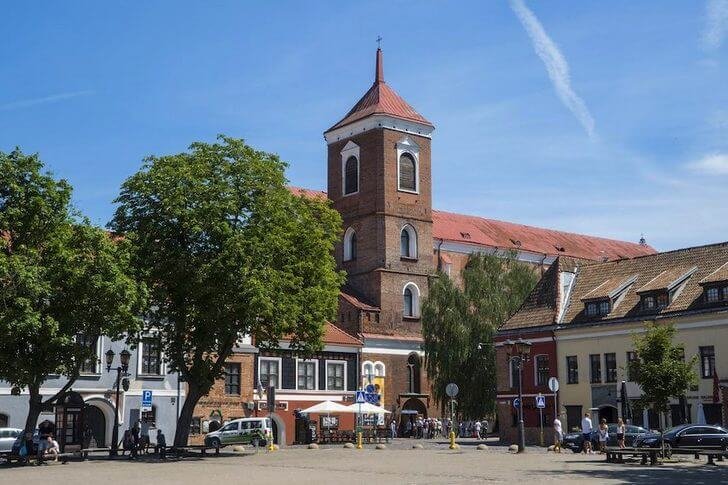
Address: Cathedral of Saints Peter and Paul, Kaunas, Lithuania
Phone: +370 37 204 044
Opening hours: Mon-Sun: 6:00-19:00
Church of St. Francis Xavier
The white-stone baroque building was erected in the 17th-18th centuries. Belongs to the Jesuit Church. It is located on the central square, near the Town Hall. It has two tall bell towers. There is an observation deck on the roof. Repeatedly the church was passed from hand to hand - first the Franciscans, then the Orthodox Church, the gymnasium. In Soviet times, it housed a gym with a sauna. It was returned to believers and re-consecrated in 1992.

Address: Church of St. Francis Xavier, Kaunas, Lithuania
Phone: +370 37 220 214
Opening hours: 08:00 - 18:00
Church of St. Michael the Archangel
The grandiose white-stone cathedral was built at the end of the 19th century by order of Alexander II. Intended for the Russian garrison. The height of the building is 50 meters, one of the 5 domes has a diameter of 16 meters and is considered the largest in Lithuania. The temple was built in neo-Byzantine style and can accommodate up to 2,000 people. Decorated with a large number of columns, sculptures, stucco and gilding. In Soviet times, it was given over to a museum. Since 1990 it belongs to the Catholic Church.
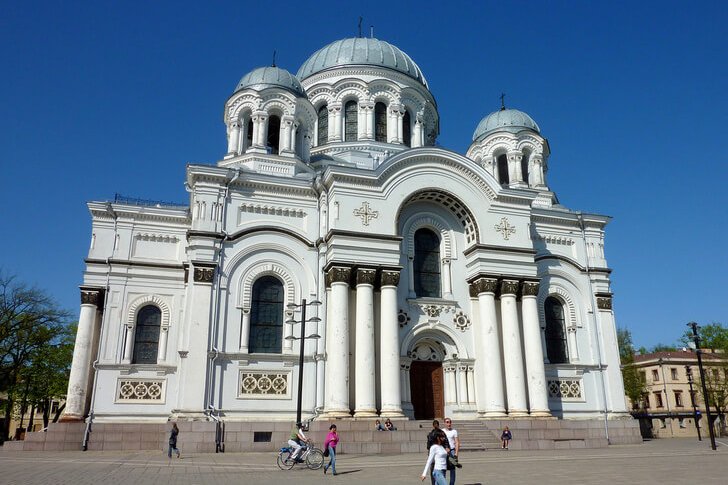
Address: Church of St. Michael the Archangel, Kaunas, Lithuania
Phone: +370 37 223738
Opening hours: 08:00 - 18:00
Church of Vytautas
It was erected in 1400 by order of Prince Vytautas the Great for Franciscan monks. It has a high bell tower. It was built of small red bricks in the Hanseatic Gothic style. All geometric patterns and decorative elements on the facade are of exceptionally regular shape, which is typical for this style. The interior decoration has not been preserved. Everything contained in the temple was made in the 20th century. The church is active, available for inspection, but not during worship.
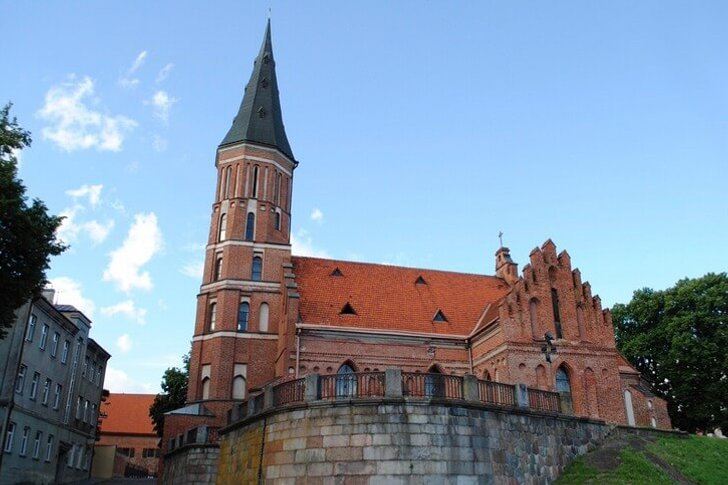
Address: Church of Vytautas, Kaunas, Lithuania
Opening hours: 10:00 - 18:00
Church of St. Gertrude
A compact Gothic building in one of the corners of the Old Town. Architectural monument. One of the oldest brick churches in Lithuania. It was erected in the 15th century, later the bell tower was completed. The most valuable shrine is the cross with the crucifixion of Christ, which is credited with miraculous power. In Soviet times, warehouses were located within the walls of the church. In the 80s, they wanted to completely demolish it, but the public prevented it. Now the temple has been restored, services are held in it.

Address: Church of St. Gertrude, Kaunas, Lithuania
Phone: +370 37 223 486
Opening hours: Mon-Sun: 10:00 - 18:00
Church of the Resurrection of Christ
It was built in the 30s of the last century. It is a majestic stylish building made of white stone with a height of 70 meters. Accommodates up to 5000 people. In Soviet times, it was turned into a radio factory workshop, where televisions were produced. Currently owned by the Catholic Church, services are held. On the roof of the church there is an observation deck, one of the best in the city. The temple is located on the Žaliakalnis hill, which can be reached by funicular.
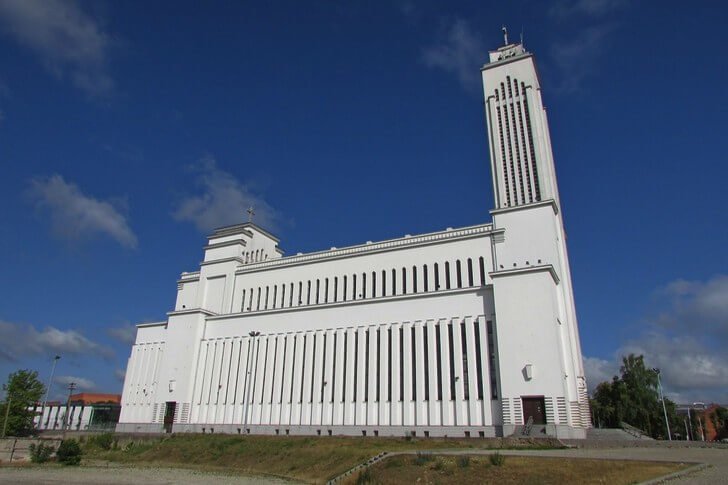
Address: Church of the Resurrection of Christ, Kaunas, Lithuania
Opening hours: 09:00 - 17:00
Pazhaislis Monastery
One of the most beautiful baroque monasteries in Europe. It was founded in 1667 and was intended for Camaldolian monks. Built by Italian craftsmen. The main pearl of the complex is a magnificent church with two symmetrical towers and an impressive central dome. Inside, the temple is generously decorated with paintings, frescoes, bas-reliefs, stucco molding, and marble wall decoration. Currently, the monastery is active, female, open to tourists.

Address: Pazhaislis Monastery, Kaunas, Lithuania
Opening hours: 08:00 - 18:00
Kaunas State Drama Theater
The first professional drama theater in Lithuania. It was created in 1920. It is located in a building built in 1928 on the famous Laisvės alley. After extensive reconstruction, this is one of the most modern theaters in the Baltic region. His current repertoire consists of 30 successful productions, including for children and youth. Some performances use audio visualization for the visually impaired, as well as simultaneous translation.
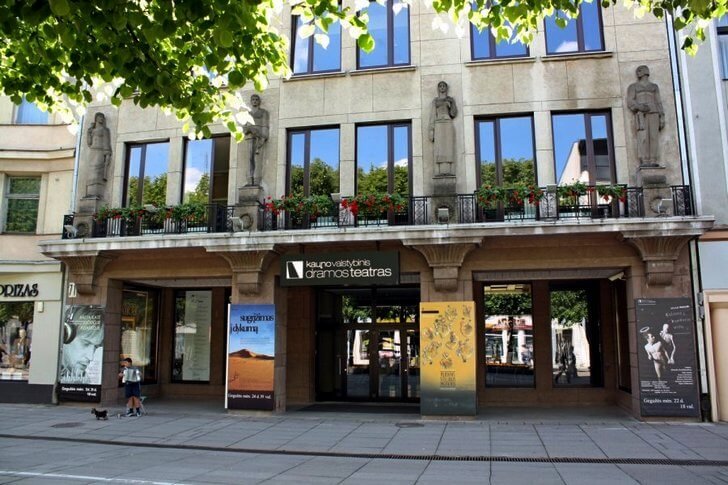
Address: Kaunas State Drama Theater, Kaunas, Lithuania
Phone: +370 37 200 191
Opening hours: Tuesday - Sunday: 10:00 - 18:00; Monday: Closed
Kaunas State Musical Theater
Year of creation - 1940. It is located in the building of the city theater, built at the end of the 19th century. The best theater directors from Lithuania and other European countries put on musical performances here. Each season, the theater pleases its audience with at least two premieres. His contemporary repertoire consists of operas, operettas, musicals, ballets and children's productions. The theater's symphony orchestra annually holds an instrumental concert with the participation of famous performers.
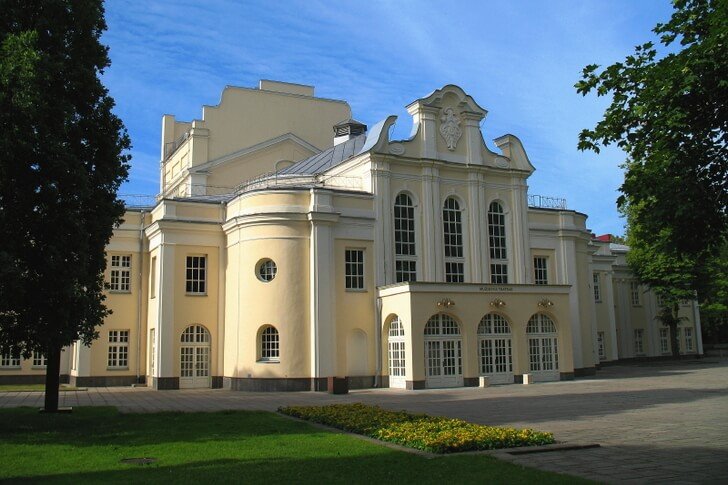
Address: Kaunas State Musical Theater, Kaunas, Lithuania
Phone: +370 37 207 290
Opening hours: Tue-Sun 11:00-18:00
Čiurlionis Museum
Opened in 1921. The name of the talented artist and composer Mikalojus Čiurlionis was given in 1944. The museum contains his paintings, manuscripts, letters and personal items, available for listening to recordings of the most famous musical works. There are also collections of Lithuanian paintings of past centuries, wooden sculptures, numismatics, folk art items. The museum's funds today include about 330 thousand exhibits.
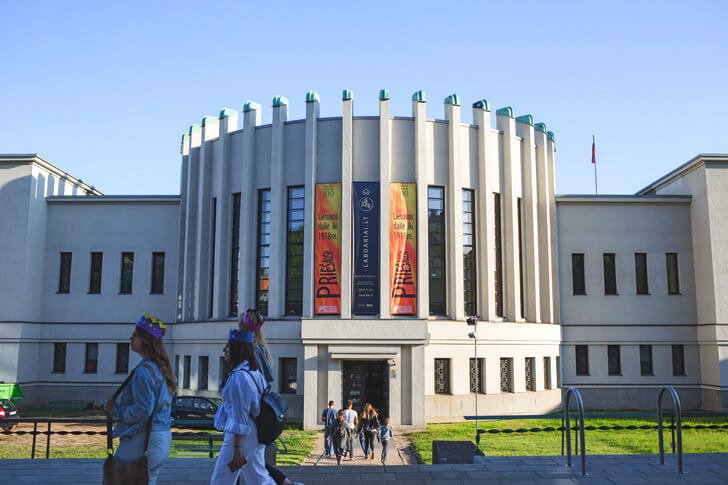
Address: Čiurlionis Museum, Kaunas, Lithuania
Phone: +370 37 757 202
Opening hours: Tuesday to Sunday: 10:00 - 18:00; Monday: Closed.
Devils Museum
It was opened in 1966 thanks to the artist A. Žmuidzinavičius, who had been collecting figurines and masks of various evil spirits for 60 years. A museum was organized in the artist's house after his death. Here are figurines of devils made of different materials - ceramics, leather, metal, wood. And also a lot of things in the form of devils - mugs, pipes, candlesticks, ashtrays, etc. The unusual collection consists of 3,000 exhibits brought from 23 countries of the world, and continues to grow.

Address: Devils Museum, Kaunas, Lithuania
Phone: +370 37 206 360
Opening hours: Monday - Sunday: 10:00 - 18:00
Military Museum named after Vytautas the Great
The military history of Lithuania, starting from ancient times, is presented in the expositions of this museum. It was founded in 1919. There are about 200 thousand exhibits in its funds. Samples of military equipment, cold and firearms, ammunition and all kinds of military paraphernalia, archaeological finds, paintings, books and documents testify to past hostilities. The museum's memorial exposition in the black marble hall is dedicated to all those who died for the independence of Lithuania.

Address: Military Museum named after Vytautas the Great, Kaunas, Lithuania
Opening hours: Tuesday to Sunday: 10:00 - 18:00; Monday: Closed.
M. Žilinskas Art Gallery
One of the best art museums in the country. It bears the name of the Lithuanian art collector Mykolas Žilinskas. It is located in a modern building, specially built for the gallery in 1989. Here are unique examples of ancient Egyptian art, works by Dutch, German and Italian painters, as well as Baltic authors, magnificent collections of porcelain and old tapestries. Organized exhibition for blind people.
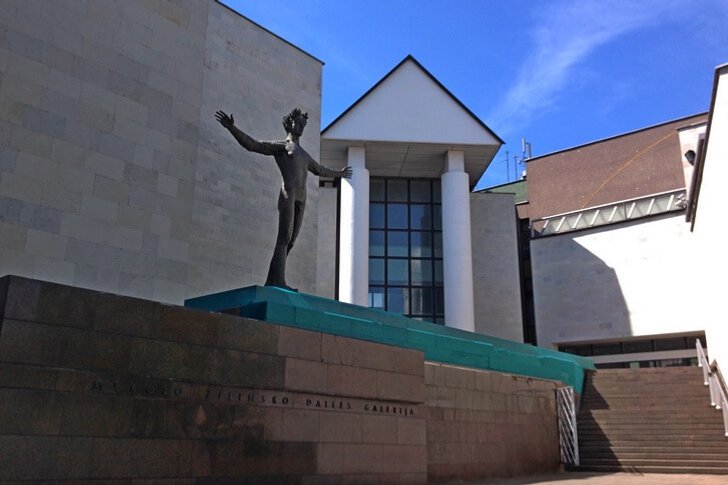
Address: M. Žilinskas Art Gallery, Kaunas, Lithuania
Opening hours: Tuesday-Saturday: 11:00-18:00; Sunday-Monday: Closed
Museum of the History of Lithuanian Medicine and Pharmacy
It was created in 1936. Located on the Town Hall Square, in an old mansion of the XVI century. The museum stores over 17 thousand exhibits. Among them are antique pharmaceutical glassware, medicine bottles, scales, medical instruments, books, personal belongings of doctors and pharmacists, furniture and equipment for medical rooms, and much more. Of interest is the reconstruction of a 19th century Lithuanian pharmacy. It is advisable to visit the museum with a guide.

Address: Museum of the History of Lithuanian Medicine and Pharmacy, Kaunas, Lithuania
Phone: +370 37 201 226
Opening hours: Tuesday - Saturday: 10:00 - 18:00; Sunday: 10:00 - 15:00; Monday: Closed.
Museum of Folk Life of Lithuania
A complex of old houses and outbuildings in the picturesque place Rumsiskes, 18 km from Kaunas. The largest ethnographic museum in Europe. Opened to visitors in 1974. On the territory of 175 hectares, the life of a traditional Lithuanian village of past centuries has been recreated. Visitors have the opportunity to see the interior of residential buildings, get acquainted with folk crafts, ride in carts, taste national cuisine, and purchase Lithuanian souvenirs.
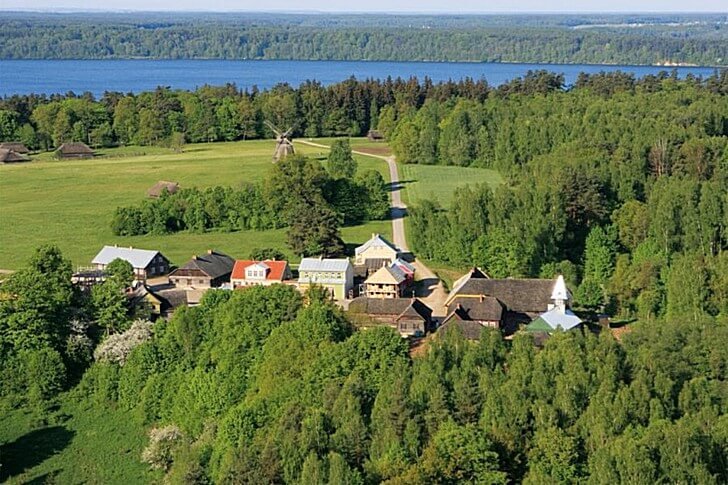
Address: Museum of Folk Life of Lithuania, Kaunas, Lithuania
Opening hours: Tue-Sun: 10:00 - 17:00
Lithuanian Aviation Museum
Established in 1990 on the territory of the oldest airfield in Lithuania. The exposition includes about 40 pieces of equipment: gliders, airplanes, helicopters. Among the exhibits are models of aircraft, engines, pilot uniforms, personal belongings of famous pilots, aviation badges from many countries, photographs and documents. Visitors have the opportunity to try out a real flight simulator. The pride of the museum is the rare ANBO-I aircraft, created in a single copy.

Address: Lithuanian Aviation Museum, Kaunas, Lithuania
Phone: +370 37 401 220
Opening hours: 10:00 - 18:00
Sugihara House Museum
During the war years, the Japanese diplomat Chiune Sugihara helped the escaped prisoners of the Nazi camps to leave the country by issuing them saving transit visas. Thus, he saved the lives of more than 6,000 Jews, for which he received the title of "Righteous Among the Nations." The museum dedicated to him is located in the building of the former Japanese consulate. Opened in 2001. The consul's office, living room, library are recreated here, numerous photo and video documents are presented.
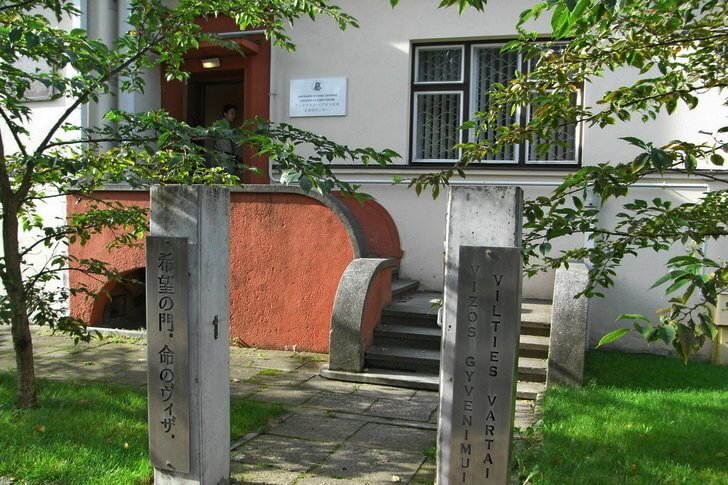
Address: Sugihara House Museum, Kaunas, Lithuania
Phone: +370 37 200 746
Opening hours: Tue-Sun: 10:00-17:00
House of Perkūnas
A powerful building in the style of the late "flaming" Gothic was erected in the 15th century by Hanseatic merchants and served as an office-warehouse. Its name is associated with the pagan god of thunder, whose figurine was found in the 19th century in a brick wall. The house was repeatedly reconstructed, but the facade remained unchanged. The building is currently owned by the Jesuit Order. There is a gymnasium, a museum of the poet Adam Mickiewicz, a hall for exhibitions and concerts.

Address: House of Perkūnas, Kaunas, Lithuania
Opening hours: 09:00 - 20:00
Historic presidential palace
The two-storey neo-Baroque mansion was built in 1846. Later, a small garden was laid out around it. Since 1918 - the property of the Lithuanian government and the residence of the head of state. Until 1940, when Lithuania became part of the USSR, 3 presidents worked and lived here. There are monuments to them in the garden. Today the palace building belongs to the Art Museum. It houses exhibitions dedicated to former presidents and the history of the palace.

Address: Historic presidential palace, Kaunas, Lithuania
Phone: +370 37 223 470
Opening hours: Monday to Sunday: 10:00 - 17:00
Zalgiris Arena
The largest multifunctional indoor arena in the Baltic States. Built in 2011 on the banks of the Neman River. Designed for 15,000 spectators. The home court of the basketball club "Zalgiris" - the most titled of all Lithuanian clubs, the multiple winner of the championships of Lithuania and the former USSR, and in 1999 - the winner of the Euroleague. It is used not only for basketball matches, but also for other sports, as well as entertainment events and concerts.
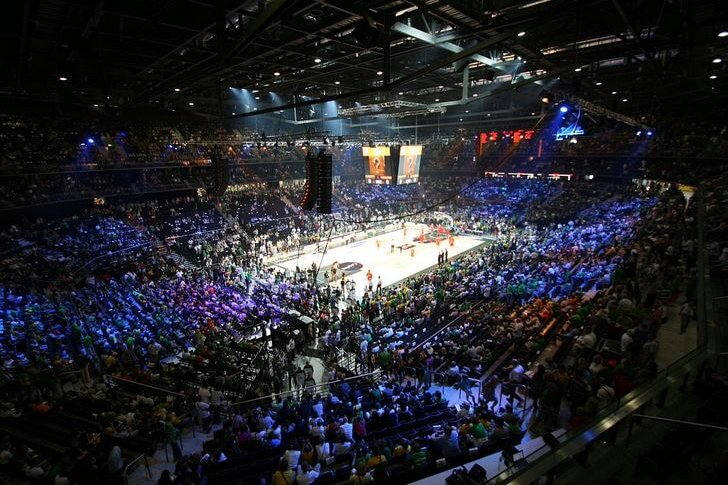
Address: Zalgiris Arena, Kaunas, Lithuania
Phone: +370 37 300 500
Opening hours: Mon-Sun: 10:00 - 22:00
Kaunas Botanical Garden
Year of foundation - 1923. Area - 63 hectares. It is located on the territory of a former estate of the 19th century, where a house, a small fort, statues, ponds with bridges have been preserved. Owned by the local university. The open garden consists of 5 thematic zones: flowers, fruits and berries, local rare plants, medicinal flora, dendrological collection. The greenhouses contain heat-loving exotic plants from all over the world. In total, about 7,000 plant species are represented in the botanical garden.
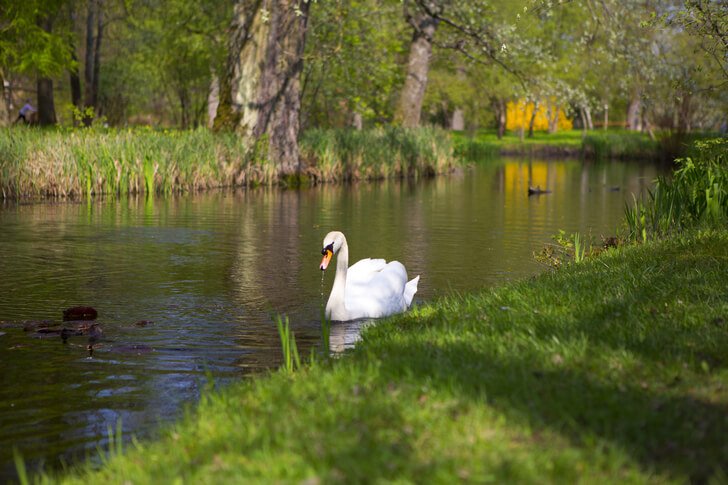
Address: Kaunas Botanical Garden, Kaunas, Lithuania
Phone: +370 37 400 181
Opening hours: 10:00 - 19:00
Ažuolinas park
Located in a picturesque residential area Zaliakalnis. Area - 84 hectares. The oak grove in the park is the largest in Europe. Some giant oaks are over 300 years old. This is all that remains of a large oak forest that surrounded the city, but was cut down in past centuries. There are also other deciduous trees. The valley of the river Girstupis, flowing through the park, is named after the poet Adam Mickiewicz. He loved being here.

Address: Ažuolinas park, Kaunas, Lithuania
Opening hours: 06:00 - 22:00
Lithuanian zoo
The only zoo in the country. It is located in the Ažuolinas park. Founded in 1938. About 3,000 animals live on an area of 16 hectares. There are among them kangaroos and hippos, giraffes and reindeers, monkeys and bison, numerous representatives of cats. The pride of the zoo is llamas, they participate in city parades and events. There is also a poultry house, a serpentarium, a terrarium and an aquarium. On the territory of the park there is a zoo museum, children's attractions, a souvenir shop.

Address: Lithuanian zoo, Kaunas, Lithuania
Phone: +370 37 313 356
Opening hours: 09:00 - 18:00
Kaunas funiculars
Throughout the territory of Lithuania, a similar type of urban transport has been preserved only in Kaunas. To date, there are two lines that have been moving colored wagons for more than 80 years. One of them, the oldest, is laid on the Žaliakalnis hill, the second leads to the top of Aleksotas mountain. In the early 1990s, boarding stations and wagons were thoroughly renovated. During the trip, they play music. Kaunas funiculars have been declared a cultural monument.
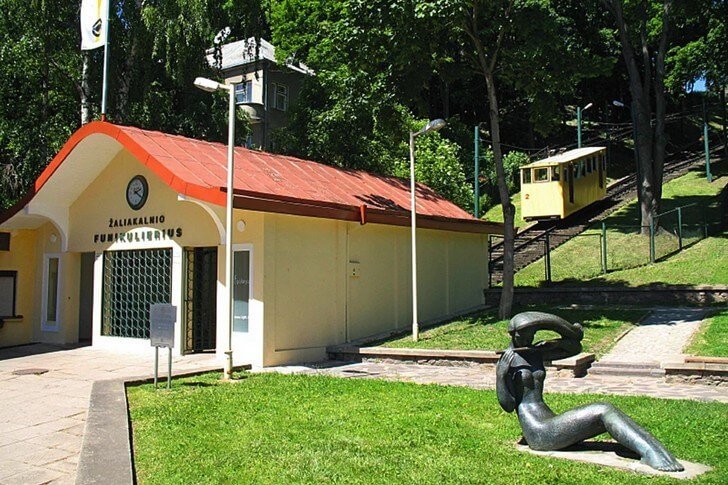
Address: Kaunas funiculars, Kaunas, Lithuania
Phone: +370 37 220 330
Opening hours: 10:00 - 20:00
Observation deck on Mount Aleksotas
On Aleksotas hill there is one of the best panoramic viewpoints in Kaunas. From here you can see the rivers Neman and Neris, Town Hall Square, Kaunas Castle, bell towers and spiers of churches, Žaliakalnis Hill. You can climb to the observation deck by funicular, which has been operating here since 1935. It connects the summit of Aleksotas with the Old City. Travel time is about 2 minutes. Those who wish can climb the stairs on foot, for this you will have to overcome 250 steps.

Address: Observation deck on Mount Aleksotas, Kaunas, Lithuania
Opening hours: 09:00 - 21:00
juniper valley
It is located on the banks of the Neman River, in the vicinity of the village of Arlavishkes. Juniper thickets occupy an area of 5 hectares and are recognized as a natural monument. The age of some bushes exceeds 100 years, and the height reaches 12 meters. The hiking trail, laid through the valley, over the cliff, is recognized as the most picturesque exploratory trail in Lithuania. Its length is more than 1 km. Among the juniper thickets there are rare plants, as well as some species of butterflies.

Address: Juniper valley, Kaunas, Lithuania
Opening hours: 09:00 - 21:00
